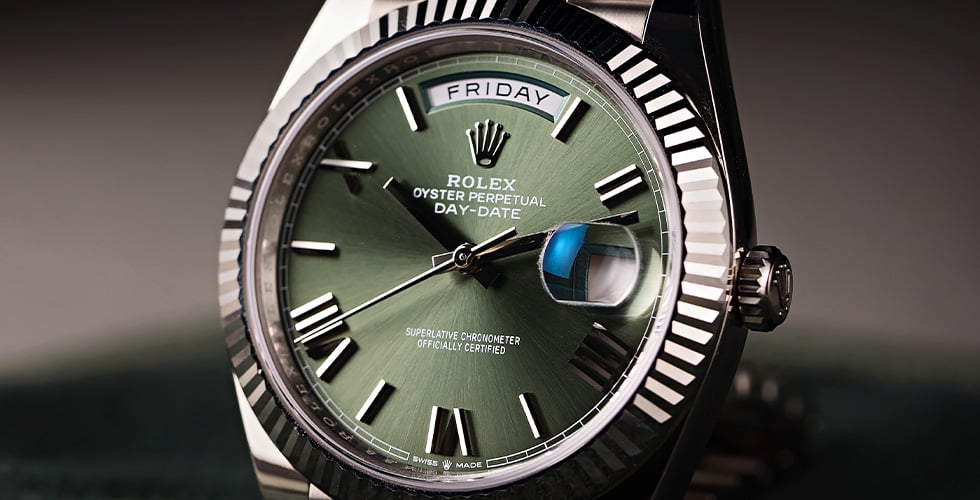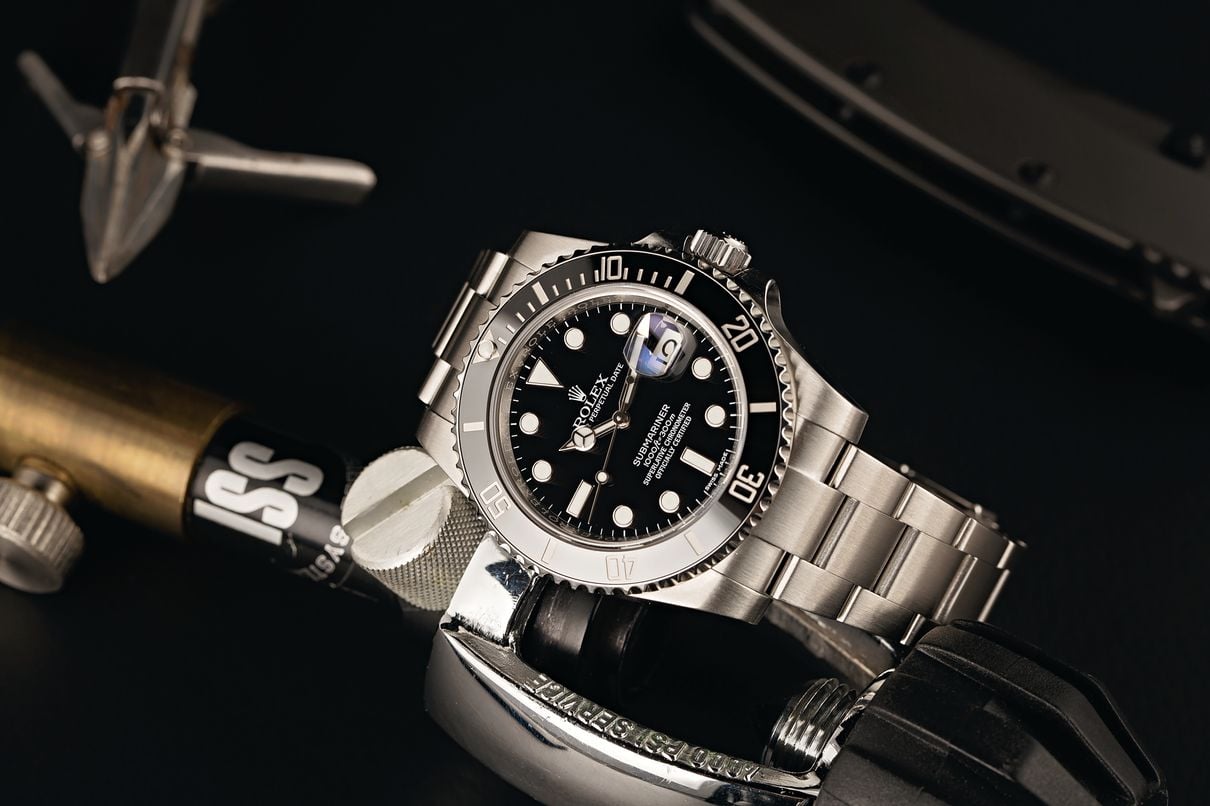A Rolex movement is the high-precision, in-house mechanical engine that powers every Rolex watch. Renowned for their unparalleled accuracy, robustness, and innovative technologies, these calibers are the reason Rolex can certify its watches as “Superlative Chronometers.” From the legendary Caliber 3135 to the new-generation 3235, Rolex movements represent the pinnacle of horological engineering. This guide covers their history, iconic models, and exactly what makes them the industry’s benchmark.
The Heart of a Legend: An Introduction to Rolex Movements
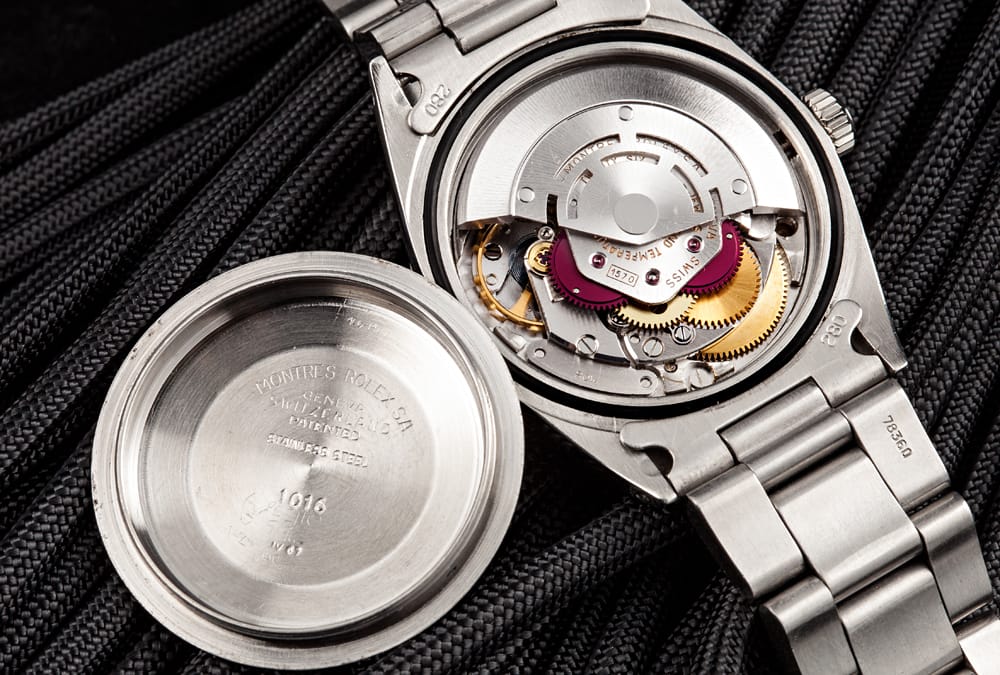
The movement is truly the heart of any Rolex watch, a mechanical marvel that transforms stored energy into the precise measurement of time. For collectors and enthusiasts, understanding what movement powers their timepiece is just as important as appreciating its iconic design. After all, it’s the movement that determines accuracy, reliability, and longevity.
This article explores everything from the fundamental mechanics to the specific calibers that power iconic models like the Submariner, GMT-Master II, and Datejust. Whether you’re curious about the legendary Caliber 3135 or the cutting-edge 32xx series, you’ll discover why Rolex movements set the standard for the entire watch industry.
What is a Watch Movement? The Basics for Beginners
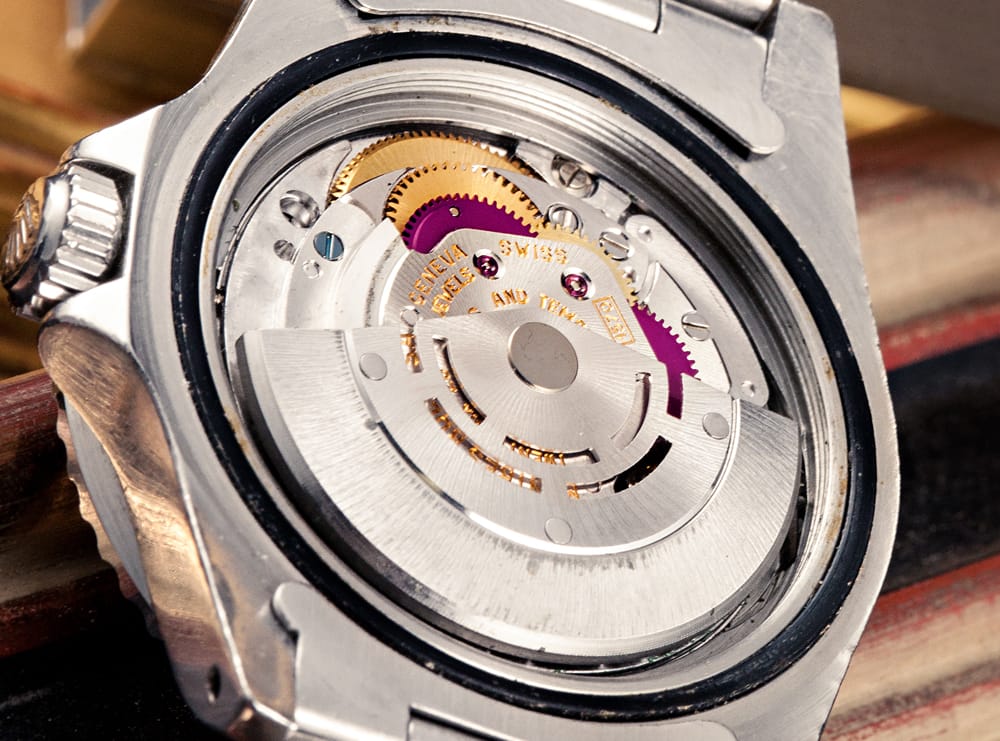
Think of a watch movement like a car engine. It’s the mechanical powerhouse that makes everything work. A mechanical movement consists of several key components working in perfect harmony: the mainspring acts as the power source (like a car’s fuel tank), the gear train transfers that energy throughout the watch, the escapement creates the familiar “ticking” sound while regulating energy release, and the balance wheel serves as the precision regulator that keeps time accurate.
A mechanical movement consists of four essential components:
- Mainspring: The coiled spring that stores and provides the power for the watch.
- Gear Train: A series of gears that transmits power from the mainspring to the escapement.
- Escapement: The “brain” of the movement that provides regular impulses to the balance wheel, creating the iconic “ticking” sound.
- Balance Wheel: The timekeeping element that oscillates back and forth, regulating the watch’s accuracy.

Modern Rolex watches exclusively use automatic movements, which means they wind themselves through the natural motion of your wrist. Unlike manual-wind movements that require daily winding, automatic movements feature a rotor that spins with wrist movement, continuously winding the mainspring.
The second-hand movement on a Rolex is distinctively smooth, sweeping eight times per second rather than the jerky tick of quartz watches. This smooth sweep is one of the hallmarks of a quality mechanical movement and a key identifier of an authentic Rolex.
A Brief History of Rolex Movement Innovation
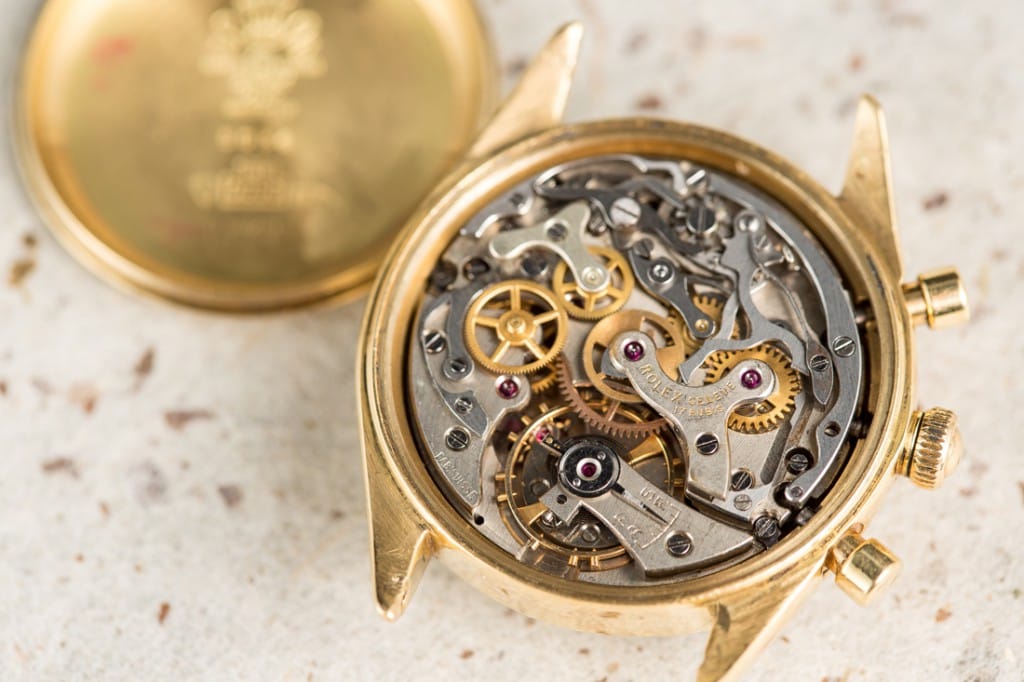
Rolex’s movement evolution follows these key milestones:
- 1931: Rolex patents the world’s first self-winding mechanism with a “Perpetual” rotor, setting the standard for all modern automatic watches.
- 1945: Introduction of Caliber 740 brings the first automatic date-changing complication in the Rolex Datejust.
- 1956: Launch of the Rolex Day-Date with simultaneous day and date complications.
- 2000: Rolex becomes a true manufacturer with the release of Caliber 4130, its first fully in-house automatic chronograph movement.
- 2015: Rolex begins rolling out the next-generation 32xx series, featuring the Chronergy escapement and 70-hour power reserve
The transition from externally-supplied movements to complete in-house manufacture marks the most significant chapter in this evolution. While the brand famously used Zenith’s “El Primero” chronograph movement for early Daytona models, Rolex’s development of the in-house Caliber 4130 marked their complete independence as a manufacturer.
Iconic Rolex Movements: A Deep Dive into the Calibers

Understanding specific Rolex calibers is essential for any serious collector or enthusiast. Each movement family represents a distinct era of innovation, from the robust vintage 15xx series to the cutting-edge 32xx generation. These calibers power everything from the legendary Rolex Submariner to the sophisticated Cosmograph Daytona, with each designed for specific complications and performance requirements. Let’s explore the most significant movements that have defined Rolex’s mechanical excellence across decades of watchmaking.
Caliber 3135: The Legendary Workhorse
The Caliber 3135 stands as Rolex’s most successful and enduring modern movement, serving as the backbone of the brand from the late 1980s through the late 2010s.
Key Specifications:
- Power Reserve: ~48 hours
- Vibrations Per Hour: 28,800
- Key Features: Instantaneous date, Kif/Paraflex shock absorbers, Parachrom hairspring (later models)
- Commonly Found In: Submariner Date 16610, Datejust 36, Sea-Dweller 16600, Yacht-Master
The 3135’s robust construction and precise timekeeping made it the movement that defined modern Rolex reliability standards, earning its reputation through decades of proven performance.
Caliber 32xx Series: The New Generation of Performance
The 32xx series represents Rolex’s latest generation of movements, systematically replacing the venerable 31xx family with significant technological advances. The key innovation is the Chronergy escapement, which operates 15% more efficiently than traditional escapements, contributing to an impressive 70-hour power reserve.
Current 32xx Family:
- Caliber 3235: Date version replacing the 3135, found in Submariner Date, Datejust, Sea-Dweller. For a detailed comparison between the outgoing 3135 and its successor, see our comprehensive Rolex 3135 vs 3235 movement comparison.
- Caliber 3230: No-date version for Submariner (no-date), Oyster Perpetual, Air-King.
- Caliber 3285: GMT version with independently adjustable hour hand, powering GMT-Master II and Explorer II.
These movements also benefit from new lubricants and manufacturing techniques that extend service intervals and improve long-term reliability.
Caliber 4130: The Engine of the Cosmograph Daytona
The introduction of Caliber 4130 in 2000 marked a watershed moment for Rolex, their first in-house automatic chronograph movement.
Key Specifications:
- Power Reserve: ~72 hours
- Key Innovation: Vertical clutch system for precise stopwatch starts
- Advantage: Fewer components than competing chronograph movements
- Found In: Cosmograph Daytona (2000-2023)
- Current Version: Caliber 4131 (2023 Daytona)
The 4130’s technical superiority shows in its vertical clutch system, which ensures precise stopwatch starts without the hand-jump common in other chronographs. This achievement was significant because chronograph movements are among the most complex mechanical complications.
Caliber 1570 & The 15xx Series: The Vintage Classics
The 15xx family represents the golden age of vintage Rolex movements, spanning from the late 1950s through the 1980s.
Key Vintage Calibers:
- Caliber 1570: No-date version, known for virtually indestructible reliability
- Caliber 1575: Date version with the same robust construction
- Power Reserve: ~48 hours
- Era: Late 1950s to 1980s
- Found In: Datejust 1601, Submariner references, GMT-Master watches
These over-engineered movements built Rolex’s reputation for exceptional longevity, with many 15xx calibers continuing to run accurately decades after production. This represents Rolex’s commitment to durability over planned obsolescence.
Movement Comparison Table
| Caliber | Power Reserve | Key Innovation | Era | Common Models |
| Cal. 1575 | ~48 hours | Vintage Robustness | Vintage (60s-80s) | Datejust 1601, GMT 1675 |
| Cal. 3135 | ~48 hours | Modern Workhorse | Modern (90s-10s) | Submariner 16610, Datejust |
| Cal. 3235 | ~70 hours | Chronergy Escapement | Current | Submariner 126610, Datejust 41 |
| Cal. 4130 | ~72 hours | In-House Chronograph | Modern (2000+) | Cosmograph Daytona |
In-House Prowess: Does Rolex Make Its Own Movements?

Yes, Rolex designs, manufactures, assembles, and tests 100% of its movements in-house at its state-of-the-art facilities in Bienne, Switzerland. This complete vertical integration represents the highest level of manufacturing control in the watch industry.
The historical context makes this achievement even more impressive. While Rolex used Zenith’s “El Primero” movement for Daytona production during the 1980s and 1990s, the switch to the in-house Caliber 4130 in 2000 marked the completion of Rolex’s transformation into a true manufacture. Today, every component, from the smallest screw to the most complex gear train, is produced under Rolex’s direct control, ensuring consistent quality and performance standards.
The Rolex Quartz Story: The Oysterquartz Exception

During the “Quartz Crisis” of the 1970s, when electronic watches threatened to destroy the mechanical watch industry, Rolex responded with characteristic precision and over-engineering. Rather than simply adopting standard quartz technology, Rolex developed the Caliber 5035 (Date) and 5055 (Day-Date) quartz movements.
These weren’t ordinary quartz movements. They were finished and regulated to standards far beyond typical electronic watches, housed in distinctive angular Oysterquartz cases that became icons of 1970s design. While Rolex eventually returned its focus to mechanical movements, the Oysterquartz period demonstrated the brand’s ability to excel in any technological direction they chose to pursue.
What Makes a Rolex Movement a “Superlative Chronometer”?

The “Superlative Chronometer” designation represents Rolex’s most stringent accuracy standard. While many Swiss watches earn “Chronometer” certification from COSC (the official Swiss chronometer testing institute), Rolex goes further by performing additional tests after the movement is cased.
Key technologies that enable this exceptional performance include:
- Parachrom Hairspring: A patented blue hairspring made from a niobium and zirconium alloy, offering superior resistance to magnetism, temperature variations, and shocks.
- Chronergy Escapement: Rolex’s optimized escapement that provides a 15% increase in energy efficiency, contributing to the 70-hour power reserve in 32xx series movements.
- Paraflex Shock Absorbers: The proprietary shock absorption system that increases a movement’s shock resistance by up to 50% compared to traditional systems.
These innovations work together to ensure Rolex movements maintain accuracy within negative 2 to positive 2 seconds per day, which is twice as precise as standard chronometer requirements.
The Future of Rolex Calibers: Engineering Excellence Continues

Rolex movements represent far more than mere timekeeping mechanisms. They embody the brand’s unwavering commitment to in-house production, constant innovation, and extreme reliability. From the pioneering Perpetual rotor of 1931 to today’s cutting-edge Chronergy escapement, each advancement builds upon decades of horological mastery.
The movement truly is the core of Rolex’s identity and the foundation of its reputation as a maker of “perpetual” timepieces. Understanding these mechanical marvels deepens appreciation for why Rolex continues to set the standard for luxury watchmaking excellence.
Whether you’re drawn to the proven reliability of a vintage Caliber 1570 or the advanced technology of a modern 3235, each Rolex movement tells a story of mechanical perfection. At Bob’s Watches, we understand that choosing the right Rolex means understanding what powers it.
Ready to experience this engineering firsthand? Browse our curated collection of pre-owned Rolex watches for sale and discover the movement that speaks to your passion for horological excellence.
Frequently Asked Questions
No. Rolex has been producing its movements entirely in-house for decades and does not use ETA or any other external movement suppliers.
In very quiet conditions, you can hear a faint, rapid ticking (8 beats per second) when holding the watch to your ear, but Rolex movements are generally very quiet.
This depends on the caliber. Older movements like the 3135 have a 48-hour power reserve, while modern 32xx series movements extend this to 70 hours.
